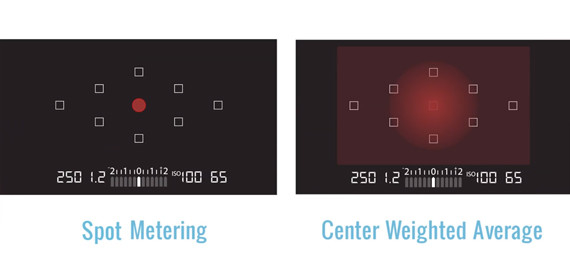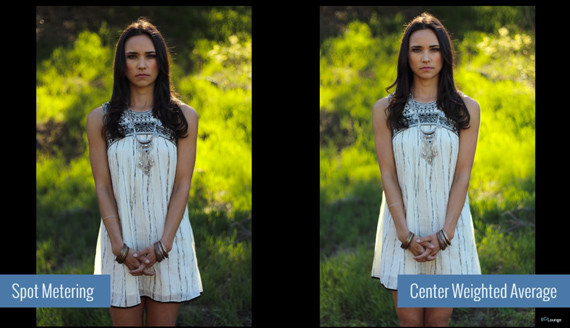Every time you point your camera at something it needs to guess at what exposure you’re going for. Choosing the correct metering mode can go a long way toward helping it read your mind. So if you haven’t yet learned your metering modes and how/when to use them, take a look at this brief tutorial by photographer Pye Jirsa and SLR Lounge. It will get you that much closer to achieving the perfect exposure with each shot:
These days DSLRs come with (at least) three metering modes: partial metering, center-weighted averaging, and matrix/evaluative metering.
- Partial Metering (including spot metering): the camera looks at a partial area of a scene and only considers the overall exposure in that one little area
- Center-Weighted Averaging: the camera looks at the whole scene and exposes accordingly, placing more emphasis on the center than the peripheral parts of your scene
- Matrix (Nikon) or Evaluative Metering (Canon):the camera divides a scene into zones and uses a proprietary formula to gauge exposure
If you’re shooting in any of the assisted modes (aperture priority, shutter priority, program mode, etc.), your camera will mostly likely automatically default to matrix/evaluative metering. This works well for much of the time, but it won’t cut it for everything. And if you’re working in manual, you may find it a bit unpredictable. This is why Pye is not a fan of it. He believes that understanding why and how the camera is making its choices gives the photographer more control over how the scene comes out. You may, of course, find that that the evaluative metering in your own camera works great for you most of the time. It’s for those times that it doesn’t that this tutorial can come in handy.
General Tips for Exposure Metering
- Use center-weighted averaging when you don’t have control of the scene and/or you have to take your shots quickly (action photography, journalistic photography, etc.). In most of these cases the subject of the photo will be near the center, so the exposure should come out pretty close.
- If you have control of a scene, use spot metering with the point of metering placed directly over the part of the subject you’re most focused on. Often you’ll be able to get the perfect exposure on the first try.
- Spot metering is also particularly helpful when shooting in manual mode, as it allows you to set your exposure based on your subject.
- Stay away from spot metering if you’re using any of the assisted modes (unless you’re shooting with a tripod and can verify that the exposure spot is always going to be in the same place). Otherwise you’re likely to get a different exposure for every spot.
- When shooting fair-skinned people, use spot metering with the meter point focused on the skin. It will often give you the slight over-exposure you want with skin–2/3 to 1 stop over-exposed.
The final take away? Knowing exactly what each metering system does and when to use each one will help you get the exposure you’re looking for when capturing a scene or image. Choose the metering system that best meets your needs in the moment. That may very well be spot metering or center-weighted average. And if that means the matrix/evaluative method, well then use that. Just know why you’re choosing it and what effects you’re most likely to get from it.
Like This Article?
Don't Miss The Next One!
Join over 100,000 photographers of all experience levels who receive our free photography tips and articles to stay current:








Leave a Reply